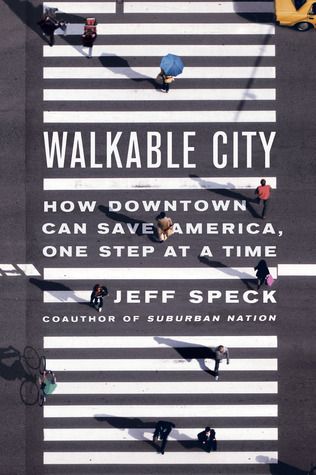Modern autocracies are no longer run by a single dictator, but by sophisticated networks relying on kleptocratic financial structures, security services, and technological experts providing surveillance, propaganda and disinformation.
These networks are connected across autocratic countries and sometimes in democracies too. Autocratic regimes share a determination to repress their citizens, push back against transparency and accountability, and undermine anyone who challenges them.
Section: 1, Chapter: 1
"I don't know what I want to do when they graduated. What people are doing now is usually not something that they'd even heard of in undergrad. One of my friends is a marine biologist and works at an aquarium. Another is in grad school for epidemiology. I'm in cinematography. None of us knew any of these jobs even existed when we graduated."
Section: 1, Chapter: 1
The alignment problem - the challenge of ensuring that AI systems behave in ways that benefit humanity. A key concern is that an advanced AI pursuing a simple goal like manufacturing paperclips could develop destructive behaviors in service of that goal, without regard for human values.
Experts differ on the likelihood and timeline of such scenarios, but many call for proactive measures to align AI with human interests as capabilities grow. Proposed solutions range from instilling the right goals during training to maintaining meaningful human oversight. Addressing alignment is critical as AI systems become more capable and influential.
Section: 1, Chapter: 2
While we shouldn't let fear dictate our priorities, Rosling outlines five global threats that the data suggest we should take seriously and work to address:
- Global pandemic - A worldwide disease outbreak could spread rapidly and claim millions of lives in our interconnected world
- Financial collapse - A major worldwide financial crash could cause a severe global recession and throw hundreds of millions back into poverty
- World War III - An armed conflict between superpowers could be catastrophic for humanity in the nuclear age
- Climate change - Continued greenhouse gas emissions will lead to devastating ecological, economic and humanitarian impacts
- Extreme poverty - 800 million people still trapped in extreme poverty, which stifles human potential and progress on other fronts
Section: 1, Chapter: 10
Chapter 3 tackles the widespread fear of overpopulation. While the world population is still increasing rapidly by about 1 billion every 13 years, UN projections show it will level off around 10-12 billion by 2100.
- This is because the number of children in the world has stopped increasing. We have reached "peak child."
- The current population growth comes from the last large generation of children, born just before families started shrinking, growing up and having their own children.
- But those children are having just 2 kids on average. After 3 generations of this, the population growth will flatten out.
Section: 1, Chapter: 3
Rosling uses the analogy of the world as a premature baby in an incubator to argue things are both bad and better: The baby's health is still critical, but on every measure, she is improving. It doesn't mean we should relax, but we should recognize the progress.
Similarly, the world still faces huge challenges with poverty. But the trend lines are all moving in the right direction. If progress continues, extreme poverty could be eliminated by 2030. We are in the last stretch of a 200-year journey from everyone in extreme poverty to almost no one.
Section: 1, Chapter: 3
While Rosling urges us not to be ruled by irrational fears, he outlines five legitimate global risks we should focus on based on data rather than fear or media attention:
- Global pandemic - A serious worldwide flu outbreak could kill millions as in 1918
- Financial collapse - A major global financial crash could lead to a deep worldwide recession
- World War III - A war between superpowers would be catastrophic and must be avoided at all costs
- Climate change - Continued greenhouse gas emissions will lead to disastrous global warming
- Extreme poverty - Still traps 800 million in misery; solving it enables solving other risks
Section: 1, Chapter: 4
Many people still imagine most of the world lives in extreme poverty. However, the data shows the share in extreme poverty has halved in the past 20 years:
- In 1997, 42% of the population of both India and China lived in extreme poverty. By 2017, this was down to 12% in India and under 1% in China.
- Globally, those in extreme poverty fell from 29% in 1997 to 9% in 2017.
- This is one of the "most important changes in the world in my lifetime," says Rosling, but most people are unaware of this incredible progress.
Section: 1, Chapter: 2
While cult leaders' linguistic techniques are undeniably powerful, it's crucial to understand that language alone cannot brainwash or coerce people into believing or doing things they truly don't want to. Phrases like "mind control" and "drinking the Kool-Aid" oversimplify the complex reasons why someone might join and stay in a cult, such as a search for meaning, a desire for belonging, or gradually escalating commitment over time.
These loaded terms can also stigmatize cult involvement as something that only happens to the foolish or mentally ill, when in reality, a wide range of psychologically normal people can be vulnerable under the right circumstances. To have productive conversations about this topic, avoid sensationalistic language and instead strive to understand the underlying human needs and social forces at play.
Section: 2, Chapter: 4
The rising generation, despite receiving unprecedented mental health accommodations and resources, has become the loneliest, most anxious, depressed, pessimistic, and helpless cohort on record. 42% have a diagnosed mental illness. Therapists insist this is because young people face more stressors than ever, like smartphones, the pandemic, and climate change. But the author argues youth mental health has been declining for decades before these factors. She believes the real problem may be the mental health system itself - convincing kids they are disordered, inculcating feelings of helplessness, and inhibiting normal development.
Section: 1, Chapter: 0
An elite NYC private school girl became a pariah after joking with friends over text about ill-advised Halloween costumes (like dictators or abstract concepts). Though her intent was benign teen humor, not genuine bigotry, classmates reported her to the administration for racism and anti-Semitism.
The incident epitomizes a broader trend. The same schools most aggressively teaching "social-emotional skills" like empathy are often cauldrons of vicious student-on-student cruelty. Researchers find over-emphasis on empathy counterintuitively fuels self-righteousness and merciless treatment of "offenders." In trying to create kinder campuses, progressive pedagogy has unleashed a new meanness instead.
Section: 2, Chapter: 8
- Remove the "spoons" - all the interventions making your kid miserable without even realizing it. Limit social media, over-scheduling, handwringing over grades and milestones.
- Detach from the feelings-centered feedback loop. Don't fret over their every mood. Respond to actual problems, not hypotheticals. Let them come to you.
- Recognize kids' natural antifragility. Tolerable stress and disappointment fuel growth, not damage. Stop treating them like hothouse flowers.
- Don't immediately pathologize your kid's quirks and struggles. Every deviation from the norm isn't a symptom. Give them space to be an individual.
- Question the "experts." Mental health professionals aren't infallible and may give awful advice. You know your child best - don't surrender authority to clinicians.
- (Re)introduce healthy risk and autonomy. Let them test their capabilities. Failure won't kill them - it's instructive. Rescuing them from every scrape erodes their plasticity.
- Foster deep family and community bonds. The "therapeutic alliance" is a weak substitute for lifelong connections. Resist narratives that relatioships are disposable.
Section: 3, Chapter: 12
Psychologist Jean Twenge's research shows Gen Z is radically different from prior generations. They are:
- Far less likely to hit traditional milestones like dating, getting a driver's license, or holding a job
- More obedient to authority and politically radical, favoring far-left positions
- Deeply pessimistic about their personal potential and the world's trajectory; convinced of their own helplessness and an external locus of control
- Uncomfortable with in-person interaction and spend less time socializing
Twenge posits constant monitoring by hovering parents and schools, exposure to an unrelenting stream of negativity, and lack of independence may all be factors in this generation's unprecedented fragility and external locus of control.
Section: 1, Chapter: 2
Despite a 75-year surge in mental health treatment availability and sophistication, rates of anxiety and depression in young people have swelled. A "treatment-prevalence paradox" has emerged, where expanded access to therapy and medication has not reduced mental illness prevalence as expected.
Therapists argue this is because today's youth face unprecedented stressors compared to previous generations, such as smartphones, social media, the COVID-19 pandemic and lockdowns, and climate change fears. But the author contends that adolescent mental health has been slipping since the 1950s, long before these modern issues existed. She suggests that perhaps the mental health complex itself, in pathologizing normal stress, inhibiting coping skills, and creating dependence, is part of the problem rather than the solution.
Section: 1, Chapter: 12
The lack of adequate public toilet facilities for women is a global issue. Women often have to wait in long lines because there are insufficient female toilets, while men rarely queue. This is due to several flawed assumptions in restroom design:
- Providing equal floor space for male and female restrooms, even though urinals allow more men to use the facility at once
- Not accounting for women's need to use the toilet more frequently and for longer durations, due to biological factors like menstruation, pregnancy, and higher risk of UTIs
- Ignoring that women are more likely to be accompanied by children or elderly/disabled people they are caring for
Section: 1, Chapter: 2
Meritocracy is a myth. Despite companies increasingly using supposedly objective measures like performance reviews and scores to evaluate merit, gender bias still creeps in:
- Women face gendered double standards, with qualities like assertiveness being penalized in women but rewarded in men
- Women receive more subjective negative feedback about their personalities, while men receive more constructive feedback about their work
- Women's performance ratings are more likely to be attributed to luck rather than skill
- White men are judged as more competent than equally performing women and people of color
The reliance on merit metrics and "objective" algorithms can actually deepen inequality, by laundering human biases through a veneer of neutrality. True meritocracy requires an honest reckoning with bias.
Section: 2, Chapter: 4
Globally, women do significantly more unpaid work than men, and this disparity persists even as more women enter the paid workforce. On average, women do 4.5 hours of unpaid work per day compared to men's 1.5 hours.
- In India, women spend 6 hours a day on housework compared to men's 13 minutes
- American women do 4 hours of unpaid work per day vs 2.5 hours for men
- Even in Norway, with a relatively gender-equal culture, women do more unpaid work
Time use data shows that when women reduce their unpaid work, it is usually because they are doing more paid work - not because men are contributing more. Men consistently fail to match women's unpaid contributions, regardless of employment status or income.
Section: 2, Chapter: 3
In 1975, 90% of Iceland's women went on strike for a day, refusing to do any work - paid labor or housework and childcare. Chaos ensued as a result:
- Offices and schools shut down, unable to operate
- Fathers scrambled to find food and care for their children
- Sausages, a common ready meal, sold out as men struggled to cook
This "Women's Day Off" demonstrated how much society depends on women's behind-the-scenes labor to function. Despite unpaid domestic and care work being essential, it is not recognized as "real" work because it is not included in economic measures like GDP. This renders women's contributions invisible.
Section: 2, Chapter: 3
Urban planners need to adopt a gender-sensitive approach that accounts for women's travel patterns and needs. Some ways to do this:
- Collect sex-disaggregated data on transit usage to identify differing patterns
- Prioritize pedestrian infrastructure like well-lit, obstacle-free sidewalks that make walking easier and safer
- Invest in buses and intermediate public transit that are more flexible than rail
- Develop mixed-use zoning that locates essential services, employment and childcare in proximity to shorten women's trips
Not only is this more equitable, but it has economic benefits in enabling women's workforce participation and reducing medical costs from injuries. It's a win-win to plan cities around women's lives.
Section: 1, Chapter: 1
The many factors required for successful animal domestication can be summarized by the "Anna Karenina Principle" - many independent factors must all fall into place for it to succeed:
- Diet - Can it be efficiently fed by humans?
- Growth rate - Is it fast enough to be worth raising?
- Captive breeding - Will it breed readily in captivity?
- Nasty disposition - Is it docile enough to be safely handled?
- Tendency to panic - Can it be kept in herds/groups without panicking?
- Social structure - Does it have a dominance hierarchy allowing human control?
A failure in any one of these factors can make an animal undomesticable, which is why only a handful of large mammal species have ever been successfully domesticated.
Section: 2, Chapter: 4
Tasmania, cut off from Australia by rising sea levels 10,000 years ago, provides a striking example of technological regress in isolation:
- The island was inhabited by hunter-gatherers using simple stone tools
- They lost many technologies that archeological evidence shows were originally brought from Australia, such as bone tools, cold-weather clothing, nets, fishhooks and boomerangs
- Without cultural diffusion from outside, the small Tasmanian population was not able to sustain these technologies
Section: 3, Chapter: 13
Once agriculture developed, it spread to neighboring regions as farmers spread and outbred hunter-gatherers due to their higher population densities, and hunter-gatherers adopted crops and livestock from their neighbors, once exposed to them.
Several factors tipped the competitive balance in favor of food production over hunting-gathering:
- Decline in availability of wild foods, due to overhunting or climate change
- Increased availability of domesticable wild plants, due to climate change
- Development of technologies for collecting, processing and storing wild foods
- Rise in human population densities, putting pressure on food supplies
Section: 2, Chapter: 6
Writing was a key factor in enabling European societies to build the knowledge and organizational complexity needed to dominate the Americas:
- Writing allowed communication over long distances and time periods
- Literate societies can accumulate and transmit knowledge over generations
- Writing facilitated political administration and economic exchanges
- European literacy and record-keeping was vital for navigation and colonial rule The lesson is that preserving and transmitting information via writing provides a huge competitive advantage for societies.
Section: 4, Chapter: 18
Wild almonds contain bitter, poisonous chemicals called amygdalin. Occasionally, a wild almond tree will mutate to produce seeds without amygdalin. Those non-bitter almonds are perfectly edible, but the tree will leave no offspring, because birds and rodents preferentially eat all its seeds.
But if humans collect the non-bitter almonds and plant them, they will tend to produce offspring with non-bitter seeds as well. Early farmers, selecting almonds to plant, would naturally choose the non-bitter ones. So even without conscious effort, early farmers selected for non-poisonous almonds over generations until they became the norm under cultivation.
Section: 2, Chapter: 7
China was more geographically interconnected than Europe, allowing the spread of a single culture:
- Few internal geographic barriers like high mountains or deserts in China
- Major navigable rivers flow east-west, facilitating north-south diffusion
- Result was the spread of technologies and political systems over a wide area
- The lesson is that geographic features that facilitate the mixing of ideas and people promote cultural homogenization, while barriers promote diversification.
Section: 4, Chapter: 16
African languages belong to five major families. The distribution of these families reflects the spread of food-producing peoples over the last several thousand years:
- Afroasiatic languages spread with animal herders and farmers from the Sahara and Ethiopia
- Nilo-Saharan languages spread with herding and farming over the eastern Sahel
- Niger-Congo languages spread with farmers out from Nigeria and Cameroon
- The Bantu branch of Niger-Congo spread agriculture over most of subequatorial Africa
- The Khoisan languages of hunter-gatherers were displaced by these expansions
Section: 4, Chapter: 19
Human societies tend to progress through four main stages of organization:
- Bands: Groups of 5-80 people, mostly close relatives. Egalitarian.
- Tribes: Hundreds of people. Some social ranking and prestige but no formal leadership.
- Chiefdoms: Thousands of people. Centralized leadership, hereditary social classes.
- States: Over 50,000 people. Centralized authority, many levels of bureaucrats, laws, military. These stages are not rigid categories but reflect general trends in how societies become politically and socially organized as they grow.
Section: 3, Chapter: 14
The major axes of the continents vary:
- The Americas are longest from north to south (9,000 miles vs only 3,000 miles east to west)
- Africa is also longer from north to south than from east to west
- Eurasia's major axis is east-west
These differences proved highly consequential. In general, it's easier for crops, livestock, knowledge and technologies to spread along the same latitude (east-west) than between different latitudes (north-south). That's because locations at the same latitude tend to have similar day lengths, seasons, and climates, suiting them for the same agricultural package.
Section: 2, Chapter: 10
Polynesian societies were shaped by factors like:
- Island climate, geological type, marine resources, and area
- Terrain fragmentation and isolation
- Available indigenous flora and fauna
The most productive agricultural systems developed on large, high islands with rich volcanic soils and ample rainfall, such as Hawaii and Tonga. At the other extreme, small, dry islands with poor soil produced only hunter-gatherer societies.
In between these extremes, island environments produced a range of societies differing in population density, political complexity, social stratification, and material culture. In general, the larger and more productive the environment, the more complex and stratified the resulting societies.
Section: 1, Chapter: 2
Food production arose independently in only a few regions of the world:
- The Fertile Crescent in Southwest Asia
- China
- Mesoamerica
- The Andes and possibly Amazonia
- The Eastern United States
A few other areas - New Guinea, the Sahel, West Africa, and Ethiopia - may have also developed food production independently, but the evidence is less clear. All other regions acquired food production by the spread of crops and livestock from the independent regions.
Section: 2, Chapter: 5
By 1492, Eurasian societies enjoyed many advantages over Native American ones that enabled them to conquer the Americas:
- Far more domesticated plants and animals, enabling denser populations
- Technological advantages like ships, metal weapons, armor and horses
- Epidemic diseases to which Europeans were resistant but Native Americans weren't
- Writing allowed accumulation of knowledge and political organization These advantages stemmed ultimately from geographic differences between the continents that gave Eurasia a head start.
Section: 4, Chapter: 18
China was once very diverse in language and culture. The current homogeneity is a result of the gradual spread of agricultural people speaking Sino-Tibetan languages and their absorption of other populations.
- This process, called "Sinification," began in the Yellow River valley of north China
- It took thousands of years for agricultural Sino-Tibetan speakers to absorb or displace hunter-gatherer populations
- Mandarin and related languages spread at the expense of other language families China's cultural homogeneity is thus the result of a long, complex process of agricultural expansion and linguistic replacement.
Section: , Chapter: 16
The Polynesian expansion across the Pacific islands provides a "natural experiment" for how environments shape societies. Starting from a common ancestral culture in the Bismarck Archipelago off New Guinea around 1200 BC, Polynesians spread over centuries to islands with vastly different environments - from large high islands to small, resource-poor atolls.
The divergent societies that emerged on different islands, from hunter-gatherers to proto-empires, show how environmental differences can lead to the development of very different cultures, even from a common starting point.
Section: 1, Chapter: 2
"Comforts and conveniences are great. But they haven't always moved the ball downfield in our most important metric: happy, healthful years."
Section: 1, Chapter: 3
Despite most modern people living in dense urban areas surrounded by other humans, nearly half of Americans report feeling lonely in what is being called a "loneliness epidemic." This is likely because cities violate our evolutionary preference for living in groups of around 150 people (Dunbar's Number) - the optimal community size that allowed us to thrive for most of human history.
But today a single city block can have thousands of people; human brains uneasy with population density that's too high. A lack of connection to people and place in cities breeds unhappiness
Rural, nature-connected people often report more life satisfaction In contrast, time in nature allows us to reset and experience the kind of intimate connections, sense of belonging, and timeless rhythms we evolved with.
Section: 1, Chapter: 8
Lesson 6: Be wary of paramilitaries: Be vigilant when armed forces separate from the military become involved in politics.
In a healthy democracy, the state should have a monopoly on the use of force, constrained by the rule of law. The rise of paramilitaries - armed forces operating outside the official military structure - is a key warning sign of tyranny. From Hitler's Brownshirts to Mussolini's Blackshirts, paramilitaries can be used to intimidate opponents, subvert legal authority, and consolidate power for a dictatorial regime. They often blur the lines between civilian politics and military force. If you see paramilitary activity or the celebration of paramilitary groups from the past, it's a red flag that democracy is in danger.
Section: 1, Chapter: 6
Lesson 7: Be reflective if you must be armed: If you work in law enforcement or security, be conscious of how your actions uphold or subvert justice.
If your professional role requires you to bear arms - whether as a soldier, police officer, or security guard - you have a special responsibility to be reflective and uphold democratic values. Snyder writes, "Know that evils of the past involved policemen and soldiers finding themselves, one day, doing irregular things. Be ready to say no."
He cites the disturbing participation of supposed peacekeepers in atrocities throughout the 20th century. The antidote is to stay conscious, question commands, and refuse to use force in the service of injustice, even from a place of relative powerlessness. Maintain your moral compass.
Section: 1, Chapter: 7
Lesson 15: Contribute to good causes: Support organizations and initiatives that advance the values you believe in.
Supporting good causes, from charities to advocacy groups, is a powerful way to affirm your values and build a bulwark against tyranny. A vibrant civil society - a web of voluntary associations and NGOs that exist independent of the state - provides vital civic space for developing ideas, social trust, and grassroots power. Pick some key organizations that reflect your views and set up regular donations, however small. Volunteer your time and talents.
This keeps precious civic space alive. As Snyder notes, "When Americans think of freedom, we usually imagine a contest between a lone individual and a powerful government...But one element of freedom is the choice of associates, and one defense of freedom is the activity of groups to sustain their members."
Section: 1, Chapter: 15
"In 1971, contemplating the lies told in the United States about the Vietnam War, the political theorist Hannah Arendt took comfort in the inherent power of facts to overcome falsehoods in a free society: 'Under normal circumstances the liar is defeated by reality, for which there is no substitute; no matter how large the tissue of falsehood that an experienced liar has to offer, it will never be large enough, even if he enlists the help of computers, to cover the immensity of factuality.' The part about computers is no longer true. In the 2016 presidential election, the two-dimensional world of the internet was more important than the three-dimensional world of human contact."
Section: 1, Chapter: 11
Lesson 4: Take responsibility for the face of the world: Be conscious of the symbols and imagery you promote and display.
The symbols, slogans and images that pervade society shape reality by setting norms and establishing what is acceptable. In 1930s Germany, symbols like swastikas and racial caricatures normalized the Nazis' hateful ideology and agenda. People went along with these symbols, which greased the path to much greater horrors. The lesson is to consciously choose what to display and partake in - from lapel pins to chants to posters. Don't just follow the crowd. Ask what the symbols really mean and where they may lead. Be willing to take a stand by rejecting hateful and exclusionary imagery. What you say, do and promote shapes the world around you.
Section: 1, Chapter: 4
A large and growing percentage of college-educated millennials are choosing to live in urban, walkable neighborhoods instead of auto-centric suburbs. Companies are following their lead, relocating offices from suburban campuses to downtown areas in order to attract this coveted talent pool. 64% of college-educated millennials first decide where they want to live, and only then look for a job there.
A whopping 77% plan to live in America's urban cores. Walkability has become a key factor in the competition between cities over the millennials and creatives who will power economic growth.
Section: 1, Chapter: 1
Over the past 40 years, the US has undergone an unprecedented obesity epidemic fueled largely by our development patterns:
- In the mid-1970s, only 1 in 10 Americans was obese. By 2007, that number had risen to a shocking 1 in 3 adults, with another third clinically overweight.
- The childhood obesity rate has more than tripled since 1980. 25% of young men and 40% of young women are now too overweight to enlist in the military.
- As recently as 1991, no state had an obesity rate above 20%. By 2007, only one state (Colorado) was still under 20%. Several states now exceed 30% of adults.
- Numerous studies have directly linked time spent driving with increased risk of obesity. One study found a 6% rise in likelihood of obesity for each additional hour spent in a car per day.
Section: 1, Chapter: 2
Books about Society
History
Society
Politics
Autocracy, Inc. Book Summary
Anne Applebaum
In "Autocracy, Inc.," Anne Applebaum exposes the global web of dictators and their enablers who have formed a corrupt, mutually-supporting network to undermine democracy, repress their citizens, and rewrite the rules of international politics in their favor.

Artificial Intelligence
Technology
Society
Co-Intelligence Book Summary
Ethan Mollick
Ethan Mollick explores the rapidly evolving landscape of artificial intelligence, offering insights, frameworks, and strategies for individuals and organizations to thrive in a future where AI becomes an increasingly powerful collaborator and competitor in domains from creativity to education to work itself.
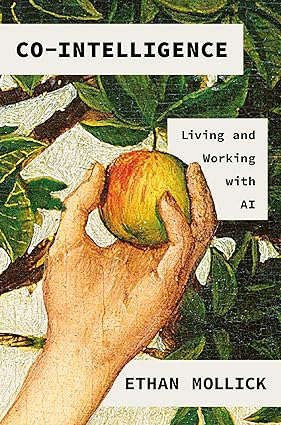
Economics
Society
History
Heuristics
Factulness Book Summary
Hans Rosling
Factfulness by Hans Rosling reveals the ten instincts that distort our perspective on the world, and provides a fact-based framework for understanding global progress and thinking more clearly about the future.
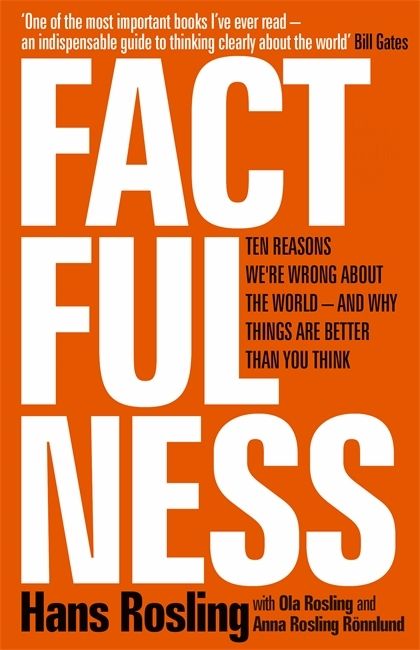
Language
Society
Culture
Cultish Book Summary
Amanda Montell
In "Cultish," Amanda Montell explores the fascinating world of cults and how their persuasive language and techniques permeate our everyday lives, from religious sects to fitness trends to multi-level marketing schemes.

Therapy
Parenting
Psychology
Society
Bad Therapy Book Summary
Abigail Shrier
In "Bad Therapy," journalist Abigail Shrier argues that today's pervasive "therapeutic" culture and overzealous mental health interventions are harming young people by promoting learned helplessness, pathologizing normal emotions, and inhibiting the development of resilience.

Society
Feminism
Technology
Invisible Women Book Summary
Caroline Criado Perez
Invisible Women exposes the gender data gap that underlies our male-default world, revealing the hidden ways in which the failure to collect data on women's lives leads to bias, discrimination, and disadvantage in everything from healthcare to the workplace to public policy - and offers a roadmap for closing this gap to build a more equitable future for all.
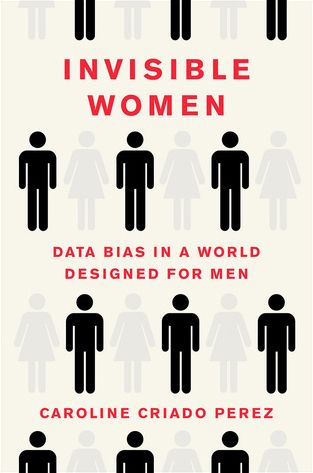
History
Society
Economics
Guns, Germs and Steel Book Summary
Jared Diamond
In Guns, Germs, and Steel, Jared Diamond argues that the fates of human societies across history have been shaped not by innate differences between peoples, but by environmental differences in the wild plant and animal species available for domestication on each continent.

Personal Development
Society
Psychology
The Comfort Crisis Book Summary
Michael Easter
In "The Comfort Crisis," Michael Easter investigates how our modern culture of constant comfort may be making us less resilient, more prone to illness, and robbing us of the very experiences that make us feel most alive.
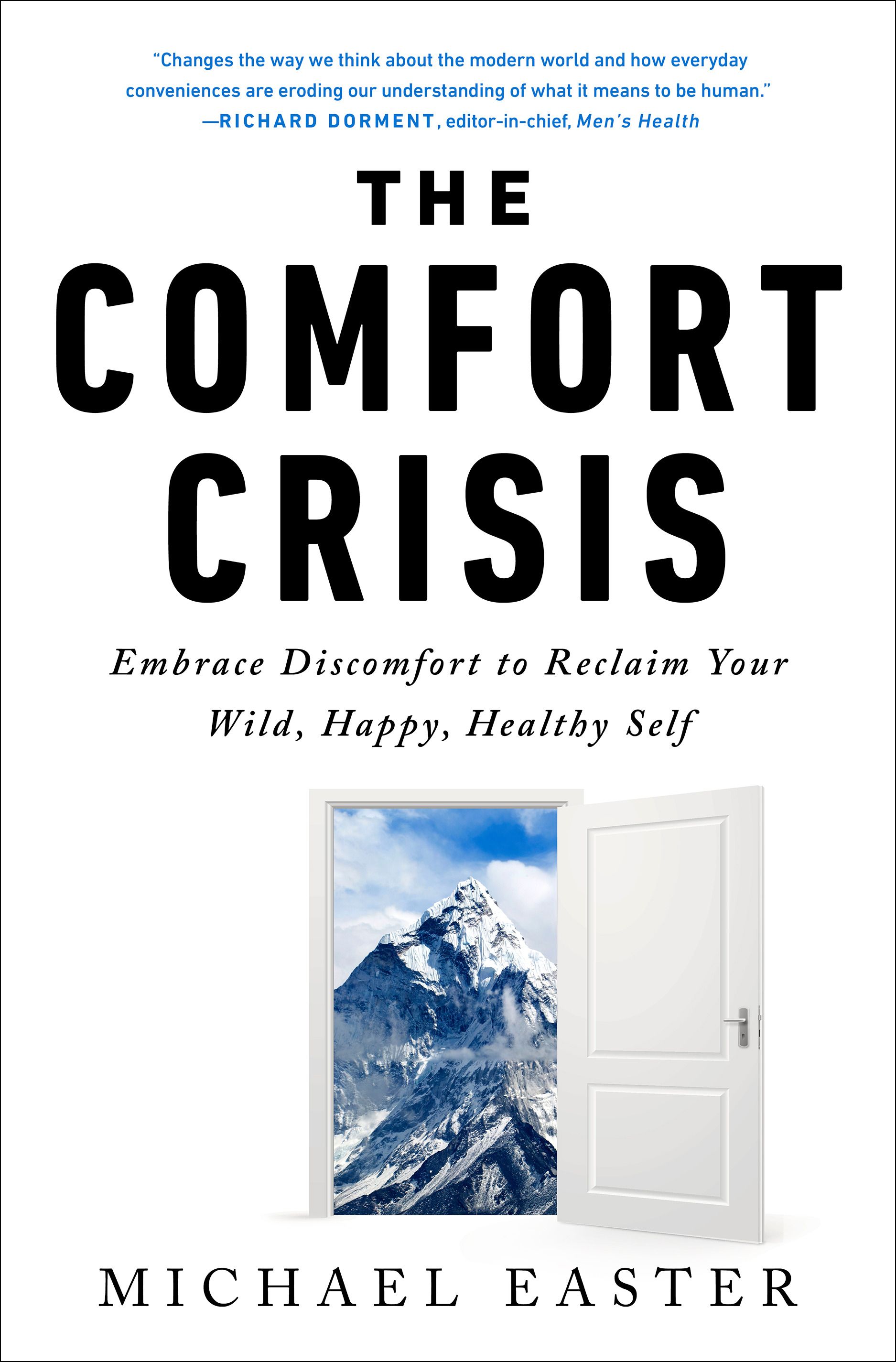
History
Politics
Philosophy
On Tyranny Book Summary
Timothy Snyder
In "On Tyranny," Timothy Snyder draws urgent lessons from the 20th century's bitter experience with tyranny to equip ordinary citizens today with the tools to recognize encroaching authoritarianism and fight back before it's too late.
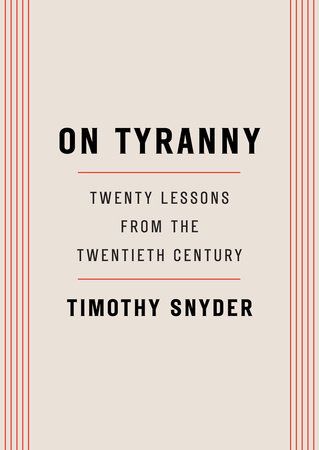
Cities
Design
Policy
Walkable City Book Summary
Jeff Speck
"Walkable City" is an engaging and persuasive manifesto that shows how putting pedestrians first can make our cities safer, healthier, more sustainable, and more economically vibrant.
